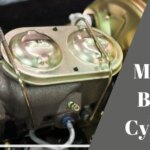
As a car detailer, we know that the water-to-car-detailing solution ratio is a very important part of achieving the desired finish. For various tasks, you’ll need different dilution ratios for car detailing. In this blog, I’ll teach you how to mix and dilute them.
Table of Contents
Why the Need for a Dilution Ratio?
When you are working on a car, it is important to know how much water and how much detailing solution to use because the ratio will have an impact on the final outcome. For example, you can’t use a high dilution ratio when trying to remove tar or degrease because it doesn’t have enough chemical power. This is especially true when you’re using citrus-based citrus extracts and acids, which are great at cutting through adhesive contamination.
The dilution ratio also helps determine drying time. A high dilution ratio won’t dry as fast as a lower one. For example, using a 1:1 ratio is good for keeping swirl marks to a minimum while working on a car with light paint scratches. That’s because it has a higher amount of lubricity and lubrication, which reduces the chances of adding swirl marks while buffing.
Read more: Things you might not know about PDR glue removers
On the other hand, a low dilution ratio (above 1:2) dries extremely fast, which is why it is great for removing scratches from paintwork or applying a final polish on a car with heavily damaged paintwork.
How to Read the Dilution Ratio
To find the dilution ratio for the product you want to use, you will need to check the package instructions. The dilution ratio is usually found in the middle of the instruction label or at the bottom where it says “Dilutions. ”
If the dilution ratio is not stated, usually you can find it on the bottle in which the product is sold.
How to Calculate Dilution Ratios?
The simplest way to calculate a dilution ratio is by following this formula: (product + water) ÷ 2. So, using 1 gallon of product and 1 gallon of water would make the dilution ratio 1:1. In most cases, the dilution ratio is written as a percentage, like 30% or 15%. This means that 1 part product to 2 parts water.
Using a Dilution Ratio
To calculate dilution ratios you’ll need to know how many gallons of each are contained in the bottle. If you’re dealing with solids, then you’ll also have to add the amount of water that’s used in the product.
For example, let’s say that you have a 16 Oz bottle of Meguiar’s X2020 Supreme Shine microfiber polish. The product contains 3.5 Oz of cleaner and 2.5 Oz of water, so the total package weighs in at 6 Oz (3.5 + 2.5). If you add one gallon to 1 gallon of water, you’ll get a dilution ratio of 1:2 (6 ÷ 2), which is the same as saying 60%.
If you were to use 1/2 of a gallon of water (1/2 gallons ÷ 2), then your dilution ratio would be 1:1.5 (1 + 1/2) and this would be equivalent to 70%.
The dilution ratio, in this case, will give you the correct amount of dilution. You can simply adhere to the amount of water that’s stated on the label for either dilution ratio or percentage if the instructions are unclear.
How to Mix the Car Detailing Solution
A wide range of products is available in a variety of dilution ratios, ranging from 1:2 to 1:4. You need to use the correct dilution ratio for the product you want to use and also know which products contain solids. The weight of the solution will also vary depending on its strength and the type of product it is.
How Much Water Should I Use?
If you’re diluting neutral water, then you’ll need to add it slowly. The finer the chemical in the product, the more water you’ll need. For example, if you’re using a high-strength car-washing soap, then 2 gallons of water is all that’s needed. If your product has a higher concentration of chemicals and is made from light oils (like carnauba wax), then 2 gallons will be more than enough.
Check out: The Mothers California Gold clay bar system: Worth your money?!
Some General Tips for Dilution Ratios for Car Detailing
Here are some useful tips that I’ve been using:
1. Dilute water for your product(s) if you’re working on a vehicle with small scratches or rub marks as the water will not be enough to even the surface out.
2. If you want to remove swirl marks, it’s recommended that you use a dilution ratio of at least 1:3 (1:3 is good for light scratches). When using this ratio, add more water because it will dilute the chemical even more.
3. After you’ve removed the majority of the contamination, your dilution ratio should be adjusted to 1:4 or 1:5. At this ratio, you can still use water to remove more contamination but you can also add even more dilution for a deeper polish.
FAQs
#1 How Do I Dilute Chemicals in a Portable Foamer?
There are a couple of ways to do it. You can use the “dilution ratio” dial on the foamer or measure out in ounces. If using a ratio, simply set the dial to the desired dilution and then add water.
Find out: How to clean your car windows like a professional!
If measuring by ounces, you will need to set it at 1 ounce of chemical per 3 ounces of water (for example). The foamer pump inside will dispense 1 ounce of chemical per pump. You can use the same amount of water for the entire mixture.
#2 What is the ratio for Ultimate Deep Polish?
It’s 1:1 (1oz of product to 1oz of water).
#3 Why Should I Care About the Suggested Chemical Dilution Ratio?
As stated above, the dilution ratio is a very important factor in determining the effectiveness of your final product. When starting out and learning how to use detailing products, it is extremely important to understand how these dilutions work because there are so many different products available in the market that will require a different ratio to be used.
You can simply follow the instructions on the package as long as you have any questions about whether or not it is safe or effective for use.
#4 What Does It Mean to Dilute 10 to 1?
Dilution is the act of making something weaker or more liquid by adding an alternate substance that’s usually liquid in nature. So, with a 10 to 1 ratio, you’re supposed to add 10 parts of water to 1 part of the chemical.
Final Words
To conclude, using a car cleaning solution with different dilution ratios can be tricky at first. Always refer to the product instructions for any specific questions regarding its use.
Hi everyone, My name is Ollie Barker.
As a seasoned auto expert I have 25 years of experience working in repair and detailing shops. I love to share my tips & tricks to all car lovers, so that’s why I’m here at Automotive Gearz publishing my content, sharing my passion. Also, I’ve been giving my recommendations on which products are the best to have on the market. I always thought it was hard to pick the right part, so hopefully I can make that a bit easier for you.
Hope you enjoy your time on my little blog!







